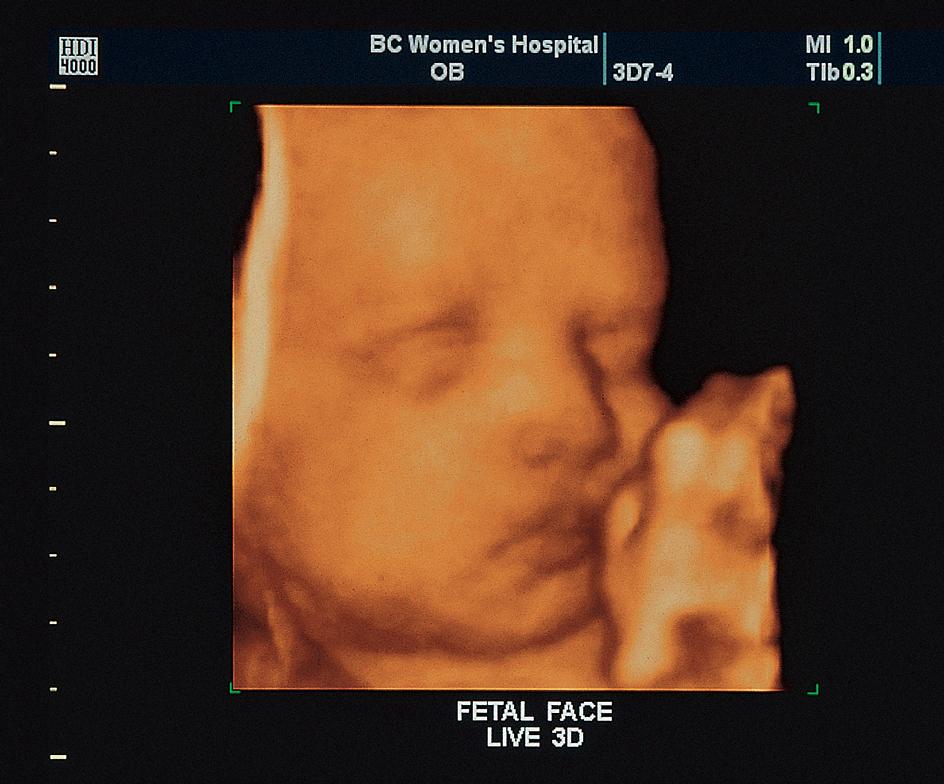Ultrasound is sound that is too high-pitched for human beings to hear. But many animals can hear and produce ultrasound. They use it to locate obstacles and to detect the movement of prey. Scientists and engineers have invented ultrasound devices, especially for medical and industrial uses.

The pitch of a sound depends upon the frequency of vibration of the sound wave. Frequency is the number of cycles of vibration per second. Higher-pitched sounds have higher frequencies than do lower-pitched sounds. Scientists measure frequencies in hertz. One hertz is one cycle per second. The highest frequency that a human being can hear depends upon the person’s age and other factors. Scientists commonly classify sounds with frequencies higher than 20,000 hertz as ultrasound.
Animal uses of ultrasound.
Bats, dolphins, and other animals use ultrasound to locate objects in the dark and to determine the motion of prey. In echolocation, the animal sends out pulses (short bursts) of ultrasound. The pulses reflect from objects, producing echoes. The animal hears the echoes and uses them to determine the direction and distance to the reflecting object.
To determine motion, animals use echolocation and a change in the frequency of waves known as the Doppler effect. This change occurs due to relative motion between the source of the waves and the object that reflects the waves—in this case, the hunted animal.
Some hunted animals—for example, the mantid, or praying mantis—can also hear ultrasound. Thus, they can use their hearing to avoid capture by animals that are using echolocation to try to catch them.
Ultrasound devices.
People have invented various devices that produce ultrasound. One simple device, an ultrasonic whistle, can produce ultrasound in air. Dogs can hear ultrasound, and so people use such whistles to call their dogs. Complex devices called ultrasonic transducers send ultrasound into liquids and solids, and receive echoes of the ultrasound. These devices convert electric energy into ultrasound and vice versa. Ultrasonic transducers are made of materials, such as quartz and some ceramics, that are piezoelectric << pee `ay` zoh ih LEHK trihk >> . This kind of material vibrates when an electric voltage is applied to it, and produces a voltage when a sound wave causes it to vibrate.
Loading the player...Ultrasound
Medical uses.
Ultrasound can produce images of almost all regions of the human body. It can produce two-dimensional images that represent “slices” through the internal structures of the body, or even three-dimensional images. Physicians can use such images to detect and evaluate cancer and other conditions, or to check the development of a fetus (unborn baby). The imaging instruments range from large, sophisticated machines to simple, battery-powered units. The images can be sent electronically to hospital computer systems and to consulting physicians at other locations.

Instruments that use the Doppler effect help doctors detect and evaluate abnormalities that alter blood flow in the heart and blood vessels. Simpler Doppler instruments monitor the heartbeat of fetuses during pregnancy and labor.
More powerful ultrasound beams are used in several medical treatments—including stimulation of wound healing, and deep heating as part of physical therapy. High-intensity focused ultrasound (HIFU) generates heat inside the body that can remove excess tissue from an enlarged prostate gland, destroy cancerous tumors, or stop an internal flow of blood. A lithotripter uses high-intensity pulses of ultrasound to break up kidney stones.
Other uses.
Devices that use ultrasound include burglar alarms, automatic door openers, instruments that detect flaws in metal parts, machines that weld plastic, tools that cut metal, and cleaning instruments that loosen dirt and other contaminants from delicate electronic components. Underwater sonar (sound navigation and ranging) devices operate much like radar to measure distances to the ocean floor, detect submarines, and even locate schools of fish.
